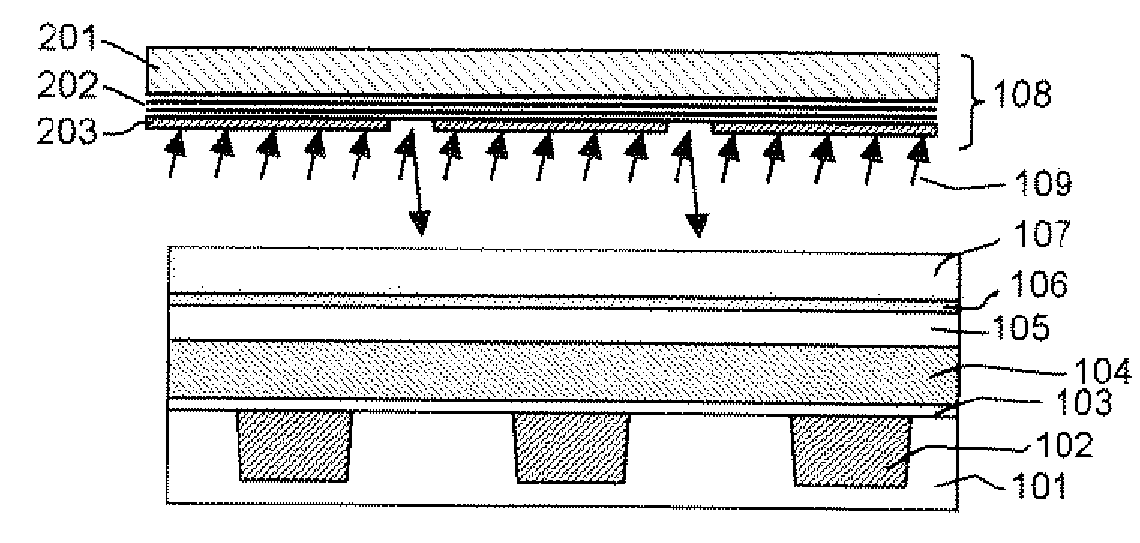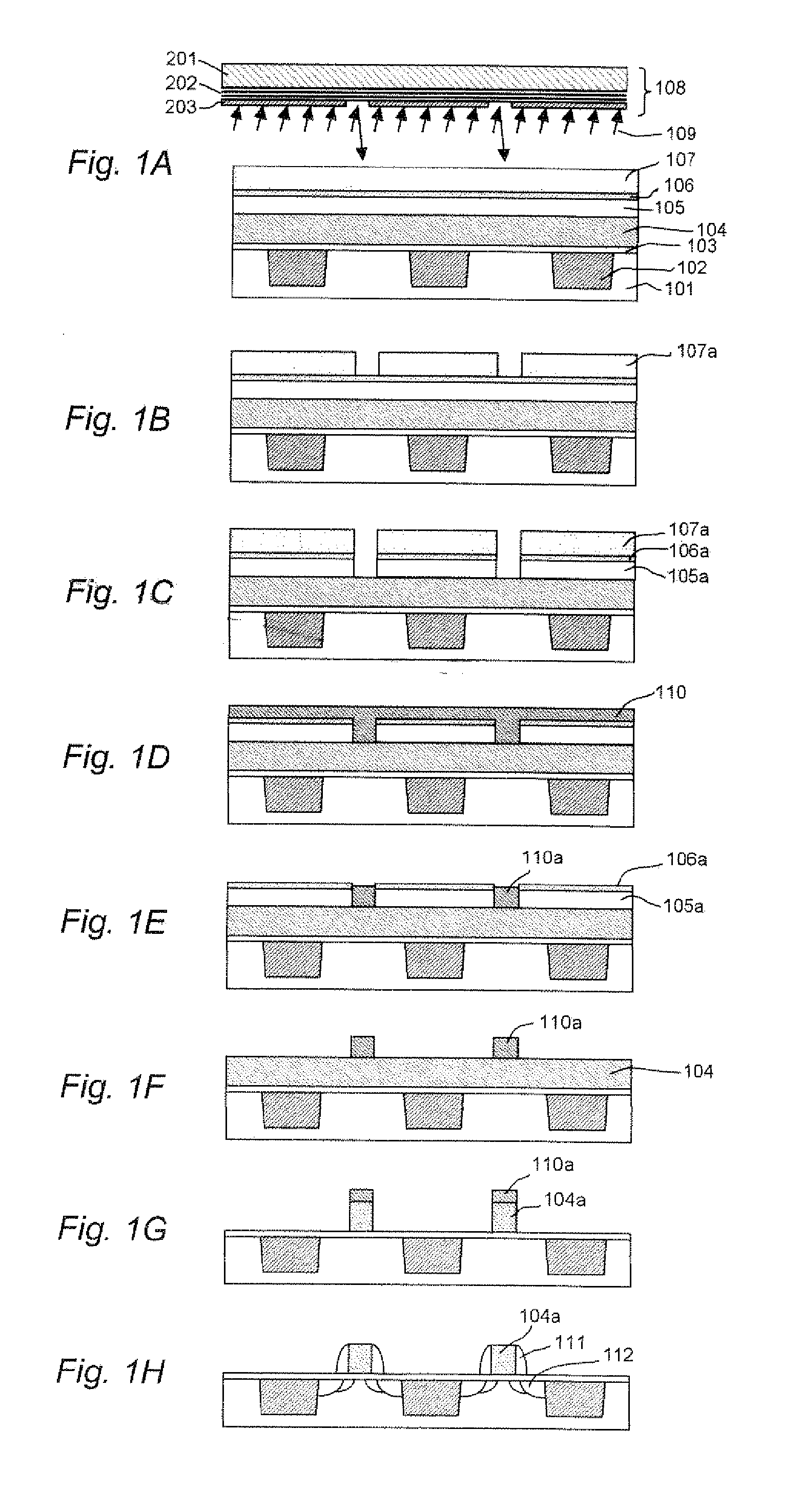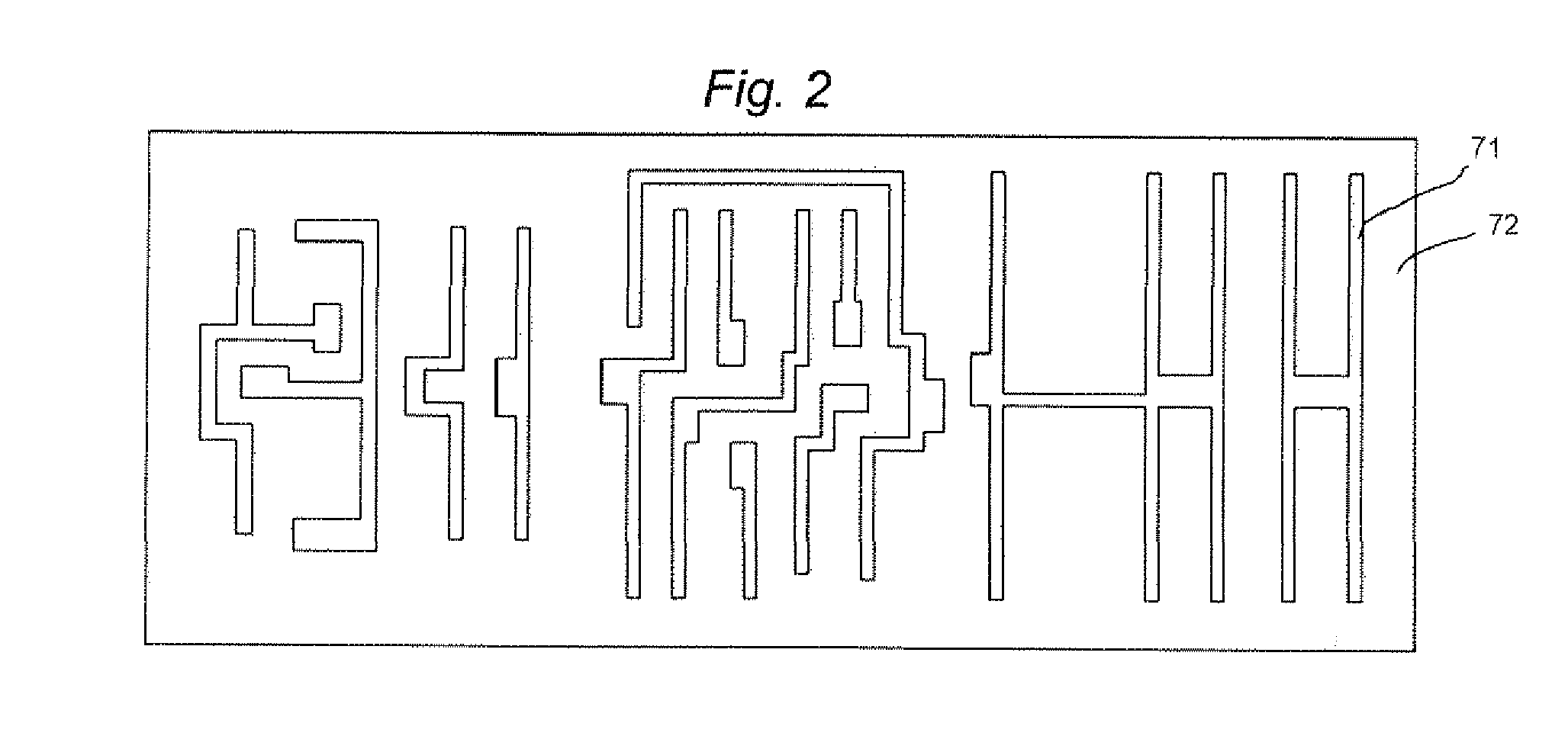Method for manufacturing semiconductor device
a semiconductor device and manufacturing method technology, applied in the field of lithography technique, can solve the problems of reducing the exposure contrast and the exposure latitude, affecting the quality of semiconductor devices, etc., and achieves the effect of reducing the flare generated at the time of exposing the mask, densely integrated semiconductors, and high exposure latitud
- Summary
- Abstract
- Description
- Claims
- Application Information
AI Technical Summary
Benefits of technology
Problems solved by technology
Method used
Image
Examples
embodiment 1
[0042]FIG. 1A to FIG. 1H are explanatory views showing an example of a method for manufacturing a semiconductor device, according to the present invention. Here, they are partial cross-sectional views of a semiconductor integrated circuit in which a number of transistor elements (e.g., MOSFET) are formed in a semiconductor substrate, and a wiring pattern including a gate electrode of each element and a gate wiring connected to the gate electrode is formed thereon.
[0043]First, as shown in FIG. 1A, an isolation 102 for isolating respective elements is formed beforehand in a semiconductor substrate 101 formed of, e.g., Si (silicon). On the substrate 101, a gate oxide film 103, an electrically conductive film 104, hard coating films 105 and 106, and a positive resist 107 are sequentially formed.
[0044]The gate oxide film 103 can be formed of SiO2 or a high-dielectric (high-k) material such as HfSiO (hafnium silicate), HfAlON (nitrogen added hafnium aluminate), HfO2, or Y2O3. The conducti...
embodiment 2
[0068]FIG. 3A to FIG. 3J are explanatory views showing another example of a method for manufacturing a semiconductor device, according to the present invention. Here, they are partial cross-sectional views of a semiconductor integrated circuit in which a number of transistor elements (e.g., MOSFET) are formed in a semiconductor substrate, and a wiring pattern including a gate electrode of each element and a gate wiring connected to the gate electrode is formed thereon.
[0069]According to this embodiment, a gate having an extremely thin line width is formed with a high degree of dimensional accuracy by performing a gate thinning process called slimming.
[0070]First, as shown in FIG. 3A, an isolation 102 for isolating respective elements is formed beforehand in a semiconductor substrate 101 formed of, e.g., Si (silicon). On the substrate 101, a gate oxide film 103, an electrically conductive film 104, an underlying film 130, hard coating films 131 and 132, and a positive resist 133 are ...
embodiment 3
[0091]FIG. 4A to FIG. 4F are explanatory views showing still another example of a method for manufacturing a semiconductor device, according to the present invention. Here, they are partial cross-sectional views of a semiconductor integrated circuit in which a number of transistor elements (MOSFET, for example) are formed in a semiconductor substrate, and a wiring pattern including a gate electrode of each element and a gate wiring connected to the gate electrode is formed thereon.
[0092]According to this embodiment, once a reversed pattern is made by combining a negative exposure mask of a wiring pattern with a positive resist, and then a wiring pattern is formed in an opening part of the reversed pattern, thereby a gate having an extremely fine minimum line width can be formed with a high degree of dimensional accuracy.
[0093]First, as shown in FIG. 4A, an isolation 102 for isolating respective elements is formed beforehand in a semiconductor substrate 101 formed of, e.g., Si (silic...
PUM
 Login to View More
Login to View More Abstract
Description
Claims
Application Information
 Login to View More
Login to View More - R&D
- Intellectual Property
- Life Sciences
- Materials
- Tech Scout
- Unparalleled Data Quality
- Higher Quality Content
- 60% Fewer Hallucinations
Browse by: Latest US Patents, China's latest patents, Technical Efficacy Thesaurus, Application Domain, Technology Topic, Popular Technical Reports.
© 2025 PatSnap. All rights reserved.Legal|Privacy policy|Modern Slavery Act Transparency Statement|Sitemap|About US| Contact US: help@patsnap.com



